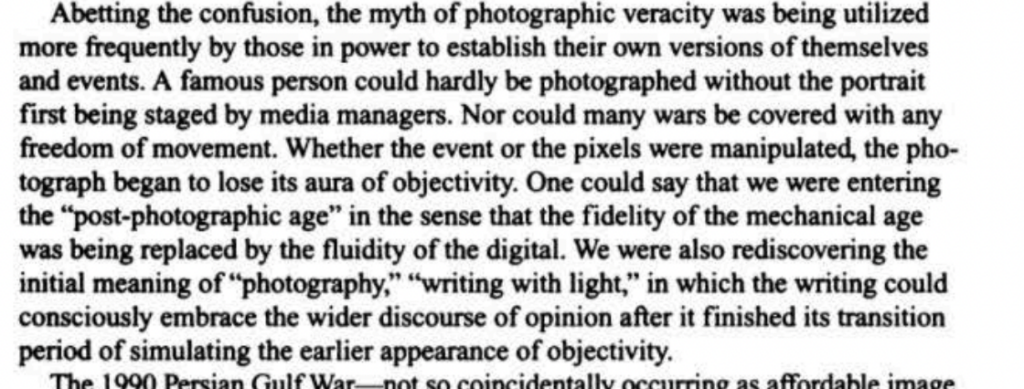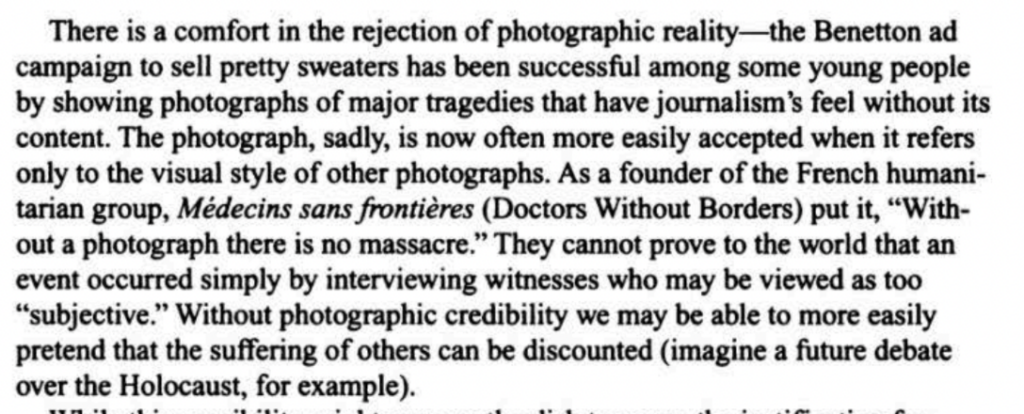This time, we read the last chapter of ” In Our Own Image” by Fred Ritchin. And firstly, just as last time, we receive two questions.
Let’s go and answer these questions!
- What does Ritchin mean with the “fluidity of the digital”? Give an example of digital imaging/digital photography that exemplifies this.
- Reflect on the extent to which photography is capable of capturing reality; and compare it to other media (technology) (e.g. text, video, virtual reality, books).
For the first question, we must understand that when the camera and photography just be invited, they were believed to be the “truth”. Since a camera can freeze a moment of scenery, thus becoming an eternal memory. However, with the development of the science and technology, editing skills is developing, too. Every photo took by a photographer can be edited. Till now, a photo can be even “created”. This fluidity of the digital appears, and this “fluidity” actually represents a kind of “variability”. Photographs no longer represent “truth”. An example of digital photography mentioned in the article is those photos from the war. Photographers are considered to be witnesses of a war, they take pictures of the scene of the war, reflect the real situation, and reveal the reasons for the war to people. But since the advent of editing technology, the content of photos can “flow.” The photographs themselves no longer reflect reality. The seeds of doubt were planted, and photographs were no longer the most credible medium.


(parts of discussing the fluidity of the digital and the reality exists in the photo)
For the second question, I think photography can reflect reality to a greater extent than books and articles. Photos and videos can capture the reality of a moment or period of time. A scene which frozen in the camera is more reliable than the one emerging from the author’s mind. Therefore, compared with other media such as books and articles, photos are more objective and have a stronger ability to capture reality. But there is no denying that with the development of editing technology and retouching technology, the ability of photos to capture “reality” is being weakened. It gradually cannot be regarded as a “truth” that can be fully trusted. But it is still one of the most realistic mediums.



(some parts that can support my idea)
All in all, this is a very meaningful article. The authenticity of photographs and their ability to capture reality are discussed. It also explores the impact of editing techniques and technological developments on the ability to capture authenticity in photographs. The narrative is very objective, the content is profound, and it triggers the reader’s reflection.